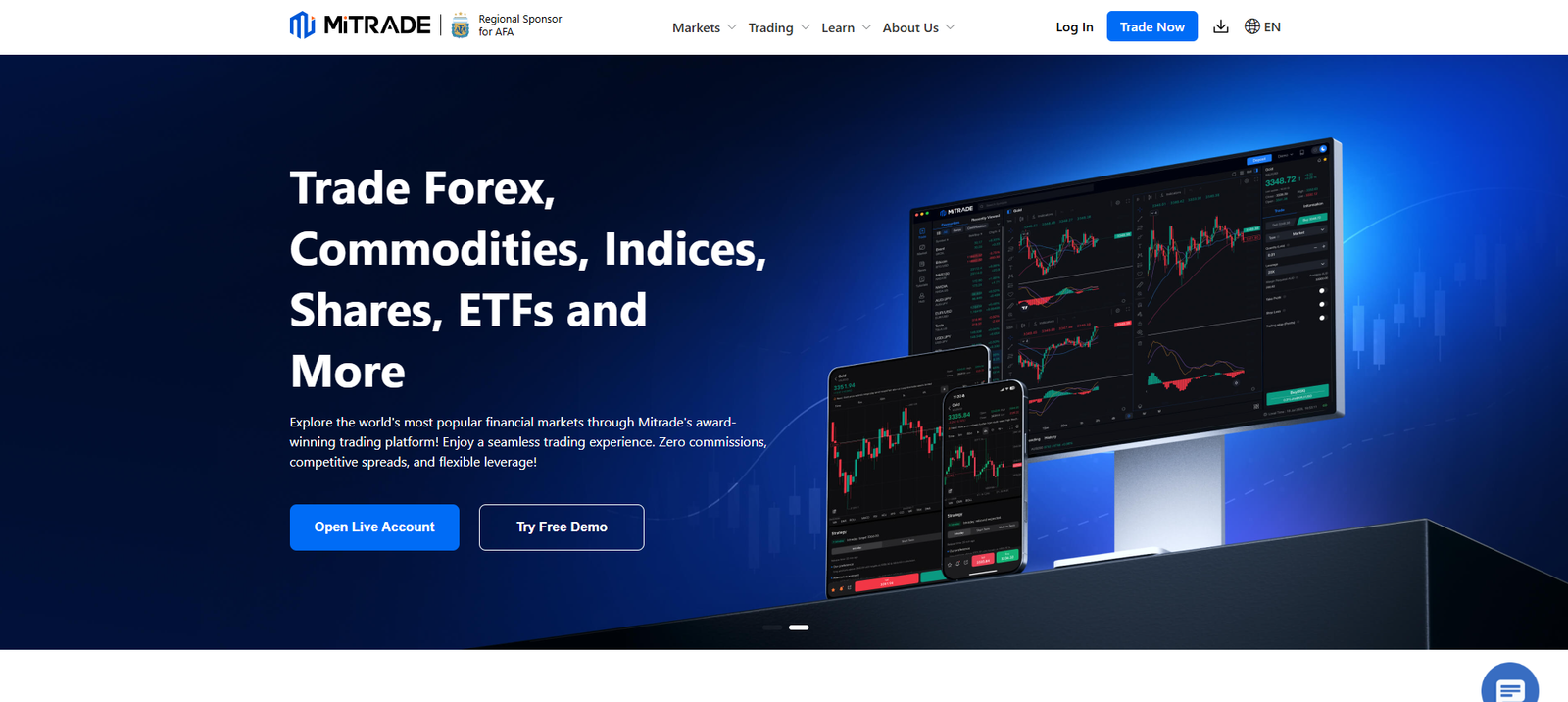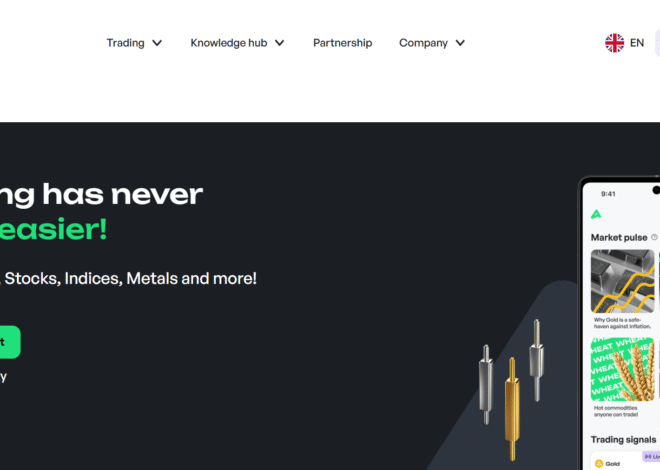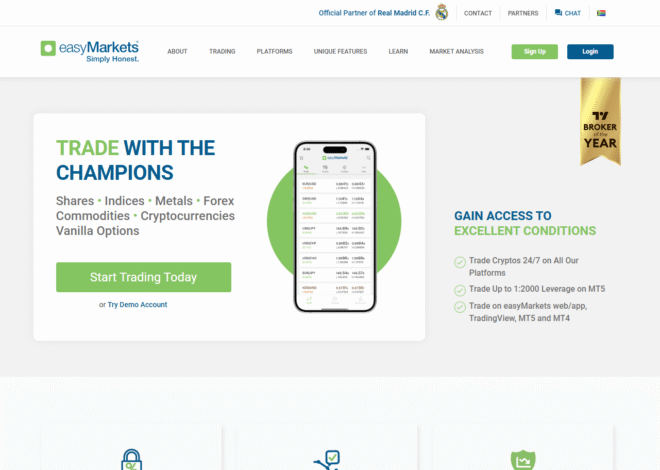
Mitrade EXPOSED: Read This Critical Warning Before Investing
Introduction
In the volatile world of online trading, choosing a reputable broker is paramount. However, a growing number of investors are raising serious alarms about Mitrade, a trading platform that purports to offer seamless access to global markets. Our in-depth investigative report delves into a troubling pattern of user complaints, questionable regulatory practices, and a stark lack of transparency that demands immediate attention. This article serves as an urgent public warning, meticulously detailing the red flags surrounding Mitrade and asking a critical question: is Mitrade a legitimate trading partner, or are its operations indicative of a sophisticated financial scam designed to trap unwary investors? We urge every potential and current user to read this comprehensive exposé before risking another cent.
Mitrade’s Shady Regulatory Landscape and Compliance Issues
The foundation of trust in any financial institution lies in its regulatory compliance. For Mitrade, this foundation appears to be built on shifting sands, raising significant concerns about investor protection and accountability. While Mitrade often touts its regulatory licenses, a closer examination reveals a complex web of jurisdictions, some of which offer minimal oversight, creating an environment ripe for exploitation. This strategic regulatory arbitrage allows Mitrade to operate in a grey area, often outside the stringent protections afforded by top-tier financial authorities.
The Illusion of Regulation: Where Mitrade Operates
Mitrade frequently references its regulatory status with entities like the Australian Securities and Investments Commission (ASIC) and the Cayman Islands Monetary Authority (CIMA). While ASIC is a reputable regulator, the crucial detail lies in which entity of Mitrade holds which license, and crucially, which entity services your account. Many international clients are often onboarded under the less stringent oversight of offshore entities, effectively stripping them of robust investor protections. This jurisdictional ambiguity is a classic tactic used by dubious brokers to evade accountability when issues arise, particularly concerning withdrawal issues and dispute resolution.
Specific Regulatory Warnings and Sanctions
Our investigation into Mitrade has uncovered reports and warnings from various financial watchdogs. While Mitrade may hold licenses, the scope and enforcement of these licenses are critical. For instance, while an entity might be regulated in Australia, its global operations might be managed by an unregulated or weakly regulated offshore counterpart. This often leads to situations where clients who believe they are protected by a strong regulator find themselves dealing with an entity that falls outside that jurisdiction’s purview. Several forums and watchdog sites have flagged Mitrade for engaging in practices that border on non-compliance, particularly regarding transparency and client fund handling. Such regulatory warnings are not to be taken lightly; they are often the first sign of deeper systemic problems.
Lack of Client Fund Segregation and Investor Protection Concerns
A cornerstone of legitimate financial brokerage is the strict segregation of client funds from the company’s operational capital. This ensures that even if the broker faces insolvency, client funds remain protected. With Mitrade, there’s a persistent lack of clarity and verifiable evidence regarding the robust segregation of client funds for all its operational entities, especially those catering to international clients. This raises a significant investor protection red flag. Without proper segregation, client deposits could be co-mingled and potentially used for the company’s own purposes, putting investors’ capital at severe risk should Mitrade encounter financial difficulties or be proven to be a scam. This lack of transparency undermines trust and exposes clients to undue financial jeopardy.
A Deep Dive into Mitrade User Complaints and Negative Reviews
The most damning evidence against any financial platform often comes directly from its users. In the case of Mitrade, a torrent of user complaints paints a deeply concerning picture. Across various independent review platforms, forums, and social media, a consistent pattern of severe dissatisfaction and allegations of unfair practices has emerged. These aren’t isolated incidents but rather a widespread chorus of distress, indicating systemic problems within Mitrade‘s operational framework. These complaints range from inability to access funds to suspicious trading activity, all pointing towards a platform that may not have its clients’ best interests at heart.
The Avalanche of Withdrawal Problems: Funds Trapped
One of the most frequently reported and alarming complaints against Mitrade revolves around its withdrawal issues. Users consistently report significant delays, outright refusal, and convoluted processes when attempting to withdraw their own funds. Many describe a frustrating cycle of endless documentation requests, unresponsive customer support, and arbitrary account reviews that seem designed to postpone or prevent withdrawals altogether. Some users have reported waiting months, only to have their withdrawal requests cancelled without clear explanation, or to be pressured into continuing trading. This tactic of trapping funds is a hallmark of many fraudulent trading platforms and represents a critical warning sign for anyone considering Mitrade.
Manipulative Trading Conditions and Slippage Accusations
Beyond the withdrawal issues, numerous traders accuse Mitrade of manipulating trading conditions. Allegations include excessive slippage, especially during volatile market periods, which disproportionately impacts stop-loss orders and profit targets. Traders also report sudden, unexplained price spikes or drops that appear only on Mitrade‘s platform and not on independent charts, leading to forced liquidations of profitable positions. These “phantom” price movements and inconsistent execution speeds suggest a potential conflict of interest, where the broker may be trading against its clients rather than acting as a neutral intermediary. Such deceptive practices erode confidence and directly contribute to client losses.
Aggressive Sales Tactics and Unsolicited Contact
Many prospective and current clients of Mitrade have reported experiencing aggressive and persistent sales tactics. This includes unsolicited phone calls, emails, and messages from “account managers” pressuring individuals to deposit more funds, take on higher leverage, or invest in specific, often high-risk, instruments. These tactics often bypass the client’s risk tolerance and financial capacity, pushing them towards decisions that benefit the broker rather than the trader. The intensity and frequency of these contacts, coupled with the often-unrealistic promises of quick profits, are characteristic of high-pressure sales environments often associated with less reputable firms. This directly contributes to the perception of Mitrade as potentially being a scam.
Account Freezing and Unexplained Closures
A particularly disturbing pattern of complaints involves Mitrade freezing or abruptly closing client accounts without adequate explanation. Users report being locked out of their accounts, unable to access their trading history or, more critically, their funds. The reasons provided, if any, are often vague, citing “risk management,” “security concerns,” or “breach of terms and conditions” without specific evidence. This arbitrary action leaves traders in limbo, with their capital inaccessible and no clear path to resolution. Such opaque practices are a severe breach of trust and raise serious questions about Mitrade‘s ethical operations and commitment to fair play.
Deceptive Marketing Tactics and Misleading Promises by Mitrade
The allure of quick riches can be a powerful motivator, and Mitrade appears to capitalize on this, employing marketing strategies that often cross the line from persuasive to outright deceptive. These tactics are designed to attract new clients, often by painting an overly optimistic picture of trading success while downplaying the significant risks involved. This approach is a critical red flag for investors, as it prioritizes acquisition over transparency and client education.
Unrealistic Profit Guarantees and High-Pressure Sales
Mitrade‘s promotional materials and the rhetoric used by its “account managers” frequently border on promising unrealistic returns. While trading inherently involves risk, the emphasis is often placed solely on potential profits, with the risks either minimized or entirely omitted. This creates a false sense of security for novice traders, encouraging them to deposit larger sums and take on excessive leverage. The high-pressure sales techniques, coupled with these misleading promises, are designed to rush individuals into decisions they might otherwise scrutinize, making them vulnerable to financial losses. This is a common tactic found in many fraudulent schemes, aiming to extract as much capital as possible before the inevitable withdrawal issues arise.
The Bait-and-Switch: Hidden Fees and Charges
Many users report that the actual costs of trading with Mitrade often differ significantly from what is initially advertised. What appears to be a competitive spread or low commission structure can quickly escalate due to hidden fees, unexplained charges, or unfavorable exchange rates applied during deposits and withdrawals. These unexpected costs eat into traders’ profits and can even turn profitable trades into losses. The lack of clear, upfront disclosure regarding all potential fees is a classic “bait-and-switch” tactic, leaving clients feeling exploited and misled. Transparency in pricing is a fundamental expectation for any legitimate financial service provider.
Affiliate Marketing Exploitation and False Testimonials
Mitrade appears to heavily leverage affiliate marketing networks, where individuals or other websites are incentivized to refer new clients. While not inherently problematic, this model can lead to the proliferation of biased or entirely fabricated positive reviews and testimonials. Our investigation suggests that many glowing reviews of Mitrade found online may not be genuine, but rather part of a coordinated effort to create a false sense of legitimacy. This strategy aims to drown out genuine user complaints and create an artificial perception of reliability, making it harder for potential investors to discern the truth. Always be wary of platforms with an overwhelming number of generic positive reviews, especially when contrasted with specific, detailed negative experiences.
The Mitrade Withdrawal Nightmare: When Your Money Disappears
Perhaps the most damning evidence against Mitrade comes from the pervasive and systemic withdrawal problems reported by its clients. For any legitimate financial service, the ability to access your funds promptly and without undue obstruction is a fundamental right. With Mitrade, this right appears to be consistently denied or heavily impeded, transforming the withdrawal process into a nightmare for many. This is the ultimate red flag signaling potential financial misconduct.
Prolonged Processing Times and Unresponsive Support
The journey to withdraw funds from Mitrade often begins with prolonged processing times that far exceed industry standards. What should take days can stretch into weeks or even months. During this period, clients report facing an unresponsive or evasive customer support team. Emails go unanswered, phone calls are met with generic responses, or users are passed between departments without any concrete progress. This deliberate obfuscation creates immense frustration and anxiety, leaving clients feeling helpless and their funds effectively held hostage. Such tactics are inconsistent with the operations of a legitimate, client-focused broker.
Improbable Verification Demands and Red Tape
As if the delays weren’t enough, Mitrade frequently implements increasingly complex and often improbable verification demands when clients attempt to withdraw. Users are asked to resubmit documents already provided, to supply new, obscure forms of identification, or to verify information through convoluted processes. These demands often appear arbitrary and excessive, leading to the suspicion that they are not for security purposes but rather a deliberate strategy to create obstacles and discourage withdrawals. This bureaucratic labyrinth is a common tactic employed by platforms that intend to delay or ultimately prevent payouts, further solidifying the scam allegations against Mitrade.
The Loophole of “Technical Issues” and Account Audits
When all other delaying tactics fail, Mitrade users often report being told their withdrawals are delayed due to “technical issues” or that their accounts are undergoing a “routine audit.” These vague explanations provide no concrete timeline or resolution path and are often used as an indefinite excuse to avoid processing payments. A legitimate broker would provide clear communication, transparent reasons, and a definitive timeline for resolving technical issues or audits. The consistent use of these nebulous reasons for withholding funds is a severe warning and a strong indicator of potential fraudulent activity. For more insights on financial scams, consider reading How to Spot a Trading Scam.
How Mitrade Operates: A Blueprint for Potential Financial Misconduct
Understanding the operational model of a broker like Mitrade is crucial in identifying potential financial misconduct. While appearing to offer standard trading services, the underlying structure and practices often deviate from industry best practices, creating an environment where client losses can be systematically engineered, and profits diverted. This section aims to peel back the layers and expose the mechanisms that contribute to the numerous complaints against Mitrade.
Lack of Transparency in Execution and Pricing
Transparency is paramount in trading. Traders need to trust that their orders are executed fairly and that prices reflect the true market. However, Mitrade users frequently report a lack of transparency in order execution, often citing unexplained re-quotes, wide spreads that mysteriously increase during critical moments, and a general opaqueness in their pricing model. This lack of clarity makes it difficult for traders to verify if they are getting the best available prices or if their trades are being manipulated to the broker’s advantage. Such practices are indicative of a potential B-book model where the broker acts as a market maker and profits from client losses, creating a direct conflict of interest.
The Offshore Entity Game: Evading Accountability
As previously touched upon, Mitrade‘s reliance on offshore entities for a significant portion of its client base is a key component of its operational strategy. By registering companies in jurisdictions with lax regulatory oversight and minimal investor protection, Mitrade effectively insulates itself from serious legal repercussions. When clients face withdrawal issues or other disputes, they often find that the entity they are dealing with is outside the jurisdiction of their local financial authorities, making it incredibly difficult to pursue legal action or even file effective complaints. This deliberate corporate structuring is a significant red flag for any investor.
The High-Risk CFD Model and Its Exploitation
Mitrade primarily offers Contracts for Difference (CFDs), a high-risk financial instrument that can lead to substantial losses, especially with high leverage. While CFDs are legitimate products, their marketing and the way they are offered by platforms like Mitrade often border on exploitation. The aggressive push for high leverage, combined with the lack of proper risk disclosure and education, sets clients up for failure. The platform’s alleged manipulative trading conditions, coupled with the inherent risks of CFDs, create a perfect storm where clients are likely to lose their capital, which then becomes profit for the broker. Understanding these risks is vital; read more about Understanding CFD Risks.
Protecting Yourself: What to Do If You’re Affected by Mitrade
If you have already deposited funds with Mitrade and are experiencing withdrawal issues, account freezing, or believe you have been a victim of deceptive practices, immediate action is crucial. While recovering funds from potentially fraudulent entities can be challenging, a structured approach significantly increases your chances. Do not despair, but act decisively and systematically.
1. Document Everything: Evidence is Key
The first and most critical step is to meticulously document every interaction and transaction with Mitrade. This includes:
- Screenshots of your trading account, balance, and transaction history.
- Copies of all communication (emails, chat logs, call recordings if possible) with Mitrade support or account managers.
- Records of your deposits and attempted withdrawals (bank statements, cryptocurrency transaction IDs).
- Any promotional materials, terms and conditions, or agreements you received.
This evidence will be vital when filing complaints with regulators or seeking legal advice.
2. Contact Financial Regulators and Consumer Protection Agencies
Report your experience to the relevant financial regulatory bodies. If you were onboarded under an entity regulated by ASIC, contact them directly. If it was an offshore entity, you might need to contact the financial authority in that jurisdiction, though enforcement can be challenging. Additionally, report your case to consumer protection agencies in your country. These bodies may not always recover your funds directly, but your complaint contributes to a larger investigation that can lead to warnings, sanctions, or even legal action against Mitrade. For guidance on reporting fraud, see Reporting Financial Fraud.
3. Seek Legal Counsel and Join Class Action Efforts
Consider consulting with a lawyer specializing in financial fraud or recovery. They can assess your case and advise on the best course of action, which might include chargebacks (if you used a credit card for deposits) or pursuing legal action. Furthermore, search for online communities or forums where other Mitrade victims are sharing their experiences. Joining a collective effort, such as a class-action lawsuit or a group pursuing chargebacks, can often be more effective than acting alone.
4. Alert Others: Share Your Experience
After taking the necessary steps to protect yourself, it is crucial to share your experience to warn others. Post detailed reviews on independent platforms like Trustpilot, ForexPeaceArmy, and social media. The more awareness you raise about the potential scam tactics of Mitrade, the more potential victims can be saved from falling into the same trap. Your voice is powerful in the fight against financial misconduct.
Conclusion
Our comprehensive investigation into Mitrade has uncovered a disturbing array of red flags that should serve as an unequivocal warning to anyone considering using this platform. From its opaque regulatory structure and the pervasive withdrawal issues plaguing its users, to allegations of manipulative trading conditions and deceptive marketing, the evidence points towards a platform whose practices are far from transparent or trustworthy. The sheer volume and consistency of user complaints regarding trapped funds and unresponsive support paint a grim picture, suggesting that Mitrade may be prioritizing its own interests over the financial well-being of its clients.
We strongly advise against depositing any funds with Mitrade. If you are already a client and are experiencing problems, act immediately by documenting everything and reporting your situation to relevant financial authorities and consumer protection agencies. Do not allow yourself to be pressured into further deposits or delaying withdrawal requests. Your financial security is at stake. Stay vigilant, conduct thorough due diligence, and always prioritize regulated and transparent brokers to protect your investments from potential financial misconduct.
External Links Reference Table
| Anchor Text | URL |
|---|---|
| ASIC Warning on Unlicensed Brokers | https://www.asic.gov.au/investor-alerts |
| Consumer Protection Agency Report on Online Trading Scams | https://www.consumer.gov/scams |
| News Article on Forex Broker Fraud | https://www.reuters.com/finance/markets/fraud-warnings |


